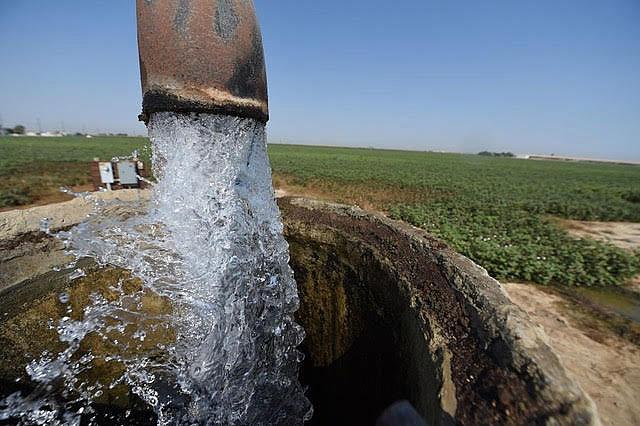Are population pressures pushing our drinking water systems to the brink?

(Photo: Robyn Beck/AFP via Getty Images)
In California, the world’s fifth-largest economy, an estimated 1 million residents don’t have access to clean, safe drinking water.
The problem is most acute in small, rural communities served by little water districts that for as long as anyone can remember haven’t had the resources to meet state and federal drinking water standards.
The troubles faced by the state’s retail-level water districts are well known, and for years state and local leaders have tried a number of solutions — from providing additional funding for water treatment to new mandates for detecting contaminants to establishing grants so people in areas with dangerous drinking water can buy bottled water.
Last July, Gov. Gavin Newsom signed a bill that provides $130 million a year for safe drinking water projects and also directs the California Water Resources Control Board to identify failing water systems and find ways to better deliver safe and affordable drinking water.
The state has even gone so far as to declare, in a piece of 2012 legislation, that its residents have a “human right to water” and has developed online tools to help people evaluate the relative safety of their drinking water supplies.
Still, despite these and other efforts, many of the state’s water districts continue to struggle.
Many of the counties that bracket the Bay Area, for example, are home to water districts that have either struggled at times to provide safe drinking water, have been identified as having a higher than average percentage of contaminants in their water or have faced significant threats to groundwater sources, according to data from the state Office of Environmental Health Hazard Assessment (OEHHA).
For example, water districts in San Joaquin, Sacramento, Stanislaus, Yolo, Monterey and San Benito counties have all faced real challenges when it comes to providing safe drinking water, according to OEHHA records.
All of these counties have also added thousands of new residents over the past 10 years, according to numbers from California Department of Finance and the U.S. Census Bureau.
With help from the Center for Health Journalism’s Impact Fund, I will report on the structural problems and solutions related to delivering safe drinking water in the greater Bay Area and surrounding counties, given that already vulnerable systems are now facing increasing population pressures as urban cores spread out.

